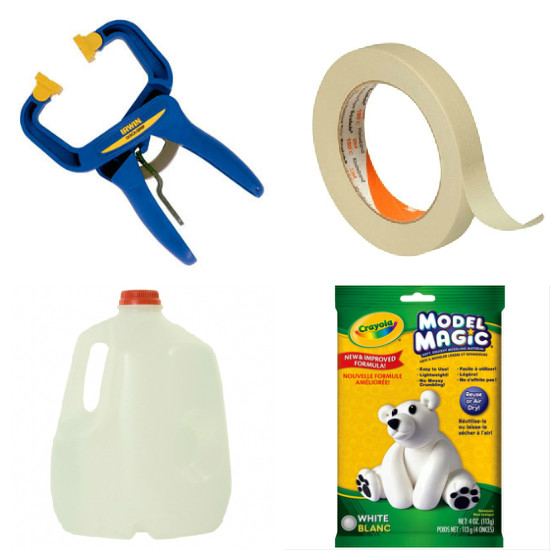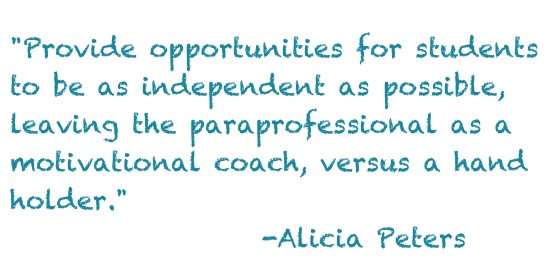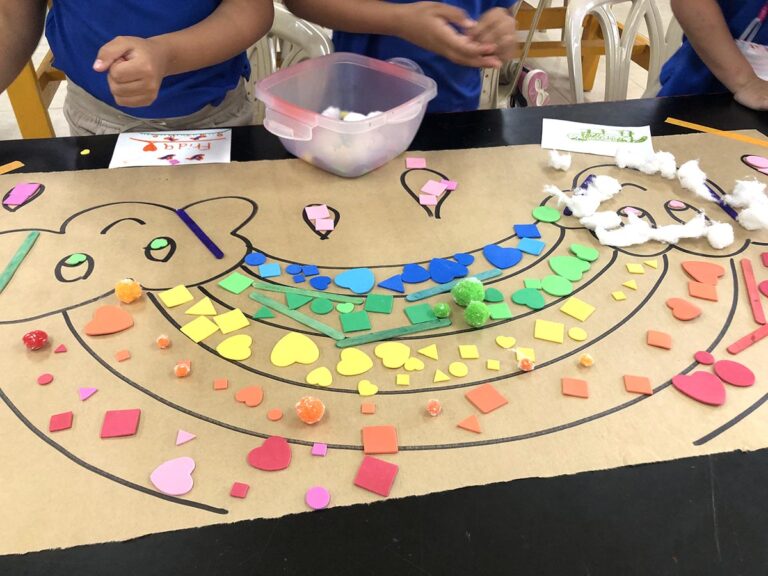 I had the wonderful opportunity to sit down with Alicia Peters, an art professor from St. Joseph Minnesota, to discuss one of her passions — adaptive tools in the art room.
I had the wonderful opportunity to sit down with Alicia Peters, an art professor from St. Joseph Minnesota, to discuss one of her passions — adaptive tools in the art room.
Alicia stated, “I struggled to find items in the traditional catalogs that fit some of my students who needed adaptions, so I got creative and started to make my own, which proved to be the best thing I ever did!”
The toolkit that Alicia will share with us, today – her five, no-fail adaptive tools to make for the art room – has many of the answers for which you’ve been looking. The best part is that all of these tools can be made with things you likely already have in your art room. She has even assembled backpacks with all of these tools inside for an artist-in-residence to take into any experience and meet the needs of all students. Brilliant!
5 No Fail Adaptive Tools to Make for the Art Room

1. Model Magic Grips
No, none of us work for Crayola, but this truly is a fun, unsuspecting tool for adaptations. Model Magic can be wrapped around a tool (any tool!) to create a custom grip for a student’s hand. It dries quickly and is lightweight. Try creating a custom tool grip kit for each of your students with physical limitations.
2. Milk Jug Handles
You may have seen this one on Pinterest, but Alicia has been using it for years. Who knew the hole of a milk jug handle fits a marker perfectly, while providing a built-in grip? You can accommodate different-sized tools by using different sizes of milk jugs and utilizing both ends of the handles. We like how you can hold both horizontally or vertically. Get directions here.
3. Paper Clamps
Although common at your local hardware store, these little babies can transform your art room in ways you didn’t expect. Small, lightweight plastic clamps can help hold projects to the table so the artist can focus on the art. “With one of my students, the clamp became a replacement for his paraprofessional,” commented Alicia. “The simple addition of the clamp eliminated the need for a paraprofessional whose primary job was to hold things for the student, transforming her into a motivational coach instead of a hand holder.”

4. Taped Paper
Along with #3, something as simple as tape can transform student confidence in the art room. It’s not the fact that you are taping down their paper, it’s where you put the tape. Alicia recommends folding the tape and placing it UNDERNEATH the paper, so the student doesn’t see it. This builds confidence because their work area doesn’t look or feel any different compared to other students.
5. Cardboard Easel
Using the directions below, you can transform a simple cardboard box into a custom easel. This is especially helpful if students have trouble with their gaze and struggle to look down or focus. The easel both lifts and secures the work. “As educators, we can’t underestimate the power of table and chair heights for all of our students. A few simple adjustments can really be a game changer,” Alicia said.

If you would like to experiment with creating your own adaptive tools, Alecia suggests the following:
1. Take Charge
Adapting tools is a creative problem you need to solve. It’s not for someone else to solve, it’s for you to solve, and it can be fun! Once you realize this, you will quickly become a ‘scout’ for new things to make and use in the art room.
2. Observe First
The only way to make accurate, customized tools for your students is to watch them. Observation is key. You will struggle to know what they need by guessing. Also, once you make a tool, ask the student to try it out. Ask how it feels, and adjust accordingly
With these DIY tricks and some really savvy insight (thank you, Alicia!) you will be well on your way to a more confident approach to creating and adapting tools in the art room.
{image source}{image source}{image source}{image source}
Like this? Here are more articles we have on adaptations for the art room:
5 Ways to Help Students with Special Needs Feel Successful in the Art Room
Who Else Wants to Better Serve Their Students with Special Needs?
Top 4 Do-It-Yourself Adaptations for the Art Room
Video: How to Create and Use a Picture Schedule in your Art Room
Book Review: Including Difference
What are some DIY adaptive tools you’ve made in the art room?
Magazine articles and podcasts are opinions of professional education contributors and do not necessarily represent the position of the Art of Education University (AOEU) or its academic offerings. Contributors use terms in the way they are most often talked about in the scope of their educational experiences.




